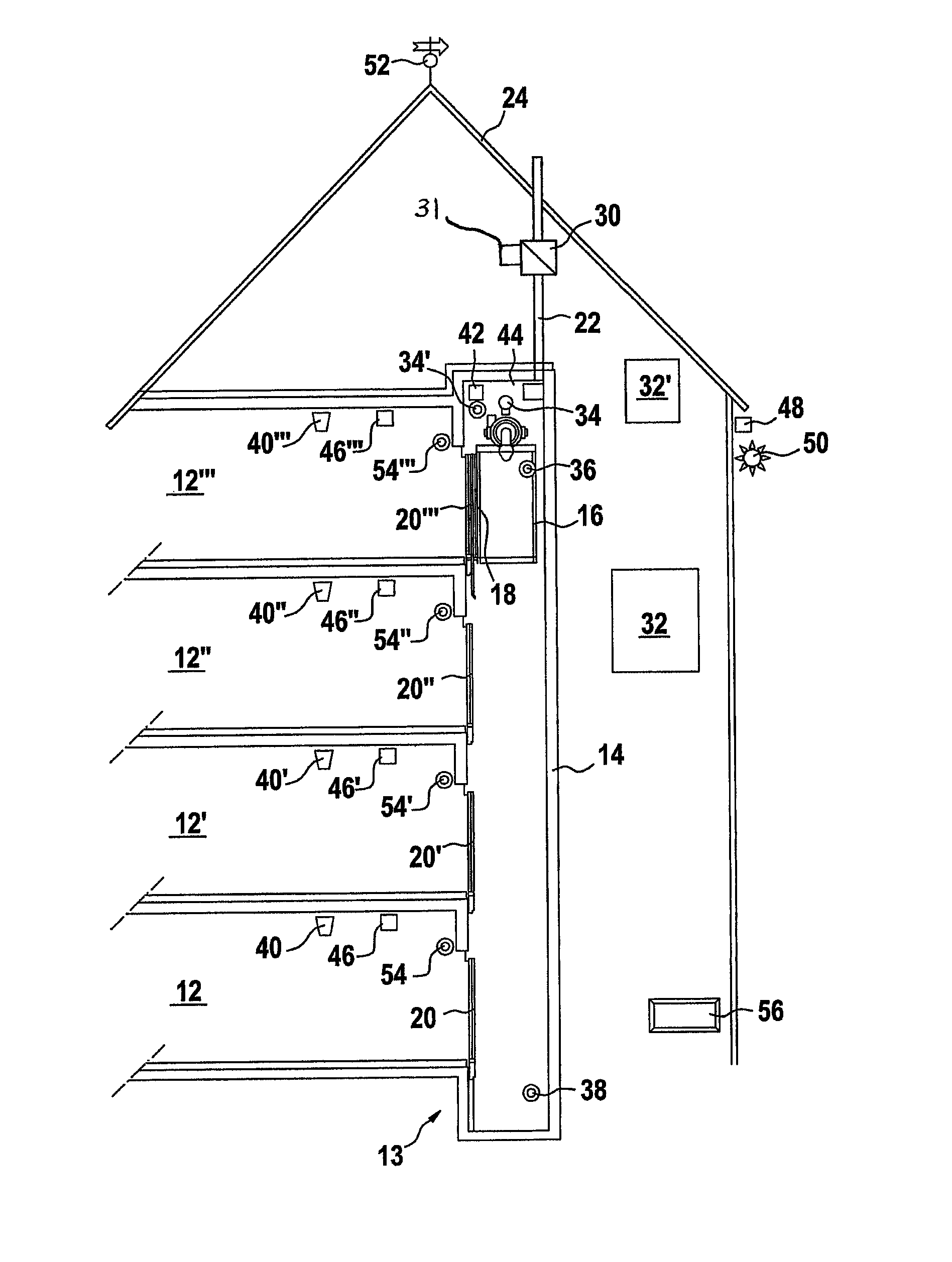Method and system for managing thermal energy in a building with duct for lifting installations
a technology for building ducts and lifts, applied in ventilation systems, elevators, heating types, etc., can solve problems such as inability to install lifts in low-energy or passive buildings, major thermal losses, and inability to reduce heat losses at ventilation passages, so as to save energy and reduce heat losses of buildings
- Summary
- Abstract
- Description
- Claims
- Application Information
AI Technical Summary
Benefits of technology
Problems solved by technology
Method used
Image
Examples
Embodiment Construction
[0025]A building 10 with several levels 12, 12′, 12″, 12′″ is represented in FIG. 1. A lifting installation 13, in this case a lift installation, is vertically arranged in the building 10 to interlink the different levels 12, 12′, 12″, 12′″ of the building 10. Such an installation comprises a shaft 14, wherein is mounted a car 16 connected to a motor (not represented), which makes the car 16 ascend and descend in the shaft 14.
[0026]The car 16 comprises a car door 18, which opens with a respective landing door 20, 20′, 20″, 20′″ at the level 12, 12′, 12″, 12′″, at which the car 16 stops to allow access between the car 16 and the respective level 12, 12′, 12″, 12′″.
[0027]A ventilation passage 22 connects the shaft 14 to the atmosphere through the roof 24 of the building 10. In compliance with European legislations in force, this ventilation passage 22 has a cross-sectional area corresponding to at least 1% of the cross-sectional area of the shaft 14.
[0028]Generally, the car doors 18 a...
PUM
 Login to View More
Login to View More Abstract
Description
Claims
Application Information
 Login to View More
Login to View More - R&D
- Intellectual Property
- Life Sciences
- Materials
- Tech Scout
- Unparalleled Data Quality
- Higher Quality Content
- 60% Fewer Hallucinations
Browse by: Latest US Patents, China's latest patents, Technical Efficacy Thesaurus, Application Domain, Technology Topic, Popular Technical Reports.
© 2025 PatSnap. All rights reserved.Legal|Privacy policy|Modern Slavery Act Transparency Statement|Sitemap|About US| Contact US: help@patsnap.com


